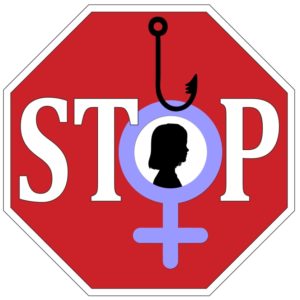Since ancient times, there have been reports of infanticide in India. This practice involves the murdering of new-born or very young girls using methods such as choking, abandonment, poisoning, and so on. This is a serious problem that has repercussions on society as a whole and has led to the redefining of selective abortion with the arrival of technological advances. This practice consists of having tests during pregnancy to know the sex of the baby before birth, and in the case of it being a girl, for an abortion to be carried out if so wished (Gomez, 2011).
The value of women in Indian society
 In her book “Quand les femmes auront disparu”, the journalist Bénédicte Manier warns of the disappearance of some 48 million women in India, and according to figures published in 2001, for every 1000 boys India would have 927 girls- a proportion that becomes 900 girls for every 1000 boys in the North of the country (Campos, 2010).
In her book “Quand les femmes auront disparu”, the journalist Bénédicte Manier warns of the disappearance of some 48 million women in India, and according to figures published in 2001, for every 1000 boys India would have 927 girls- a proportion that becomes 900 girls for every 1000 boys in the North of the country (Campos, 2010).
The practice of infanticide or selective abortion is not linked to religion, given that it is as normalized in Muslim populations as it is in Hindu ones; nor is it linked to people’s economic situation and rural environment- in fact women with greater economic resources have more means to abort. These customs are directly related to the role that women are expected to play in society, because while men are responsible for taking care of their parents or preserving the family name, women are seen as a family burden. A Hindu proverb explains that having a daughter is like planting a seed in your neighbour’s garden, and a woman’s family has to pay a considerable dowry to ensure that they will be well settled amongst their in-laws once married. In addition to this, women are denied the right to inheritance- being male is the only way to inherit.
Negative impact of technological advances
New technology has not resulted in societies rethinking these atrocious practices through improved access to information about the subject. On the contrary, technological advances such as ultrasounds that allow us to know the sex of a baby still in the mother’s womb, or improvements in the means and tools to perform abortions, has led to what is known as selective abortion.
 The media’s role has also had a negative impact, as offers are often found on the Internet from Indian clinics advertising discounts on purchasing “ultrasound plus abortion” packages (Campos, 2010). In fact, companies such as Yahoo, Google and Microsoft were brought before the Supreme Court of India with the aim of banning them from advertising laboratories that help determine the sex of the baby (El Periódico, 2015).
The media’s role has also had a negative impact, as offers are often found on the Internet from Indian clinics advertising discounts on purchasing “ultrasound plus abortion” packages (Campos, 2010). In fact, companies such as Yahoo, Google and Microsoft were brought before the Supreme Court of India with the aim of banning them from advertising laboratories that help determine the sex of the baby (El Periódico, 2015).
Government measures to ease the problem
For its part, the Government has produced a series of measures to control the use of these new tools. Although abortion has been legal in India since 1971, the Government introduced a law that allows abortion up until the 12th week of pregnancy, and only after the fourteenth week will the mother be able to have an ultrasound to find out the sex of the baby (Campos, 2010).
In 2007 the Minister for Women and Child Development, Renuka Chowdhury, announced that: “It doesn’t matter if the measure encourages the abandonment of girls. It is better that than to kill them”. These words allude to the implementation of the Cradle Babies project which consists of placing cradles in different districts so that parents who do not wish to take care of their daughters leave them there, thus avoiding the baby’s death (Rojas, 2017).
Furthermore since 2014 the Government has been implementing laws that grant women the right to inherit, although many communities refuse to accept it, continuing to favour men and restricting the role of women. However, the application of this law is also an incentive for many families to keep practising selective abortion, because they think that what their daughters inherit will just end up in the hands of their in-laws (Gomez, 2011).
As we wait for the Government and NGOs to work together to solve this problem that currently affects most countries in the world such as China and Vietnam, our duty as a society is to raise awareness about these injustices and commit to spreading hope for change.
written by : Maria Garcia Translated by : Carl Eadie Proofread by : Allegra FitzHerbert |
Campos Mansilla, B. (March 2010). El feticidio e infanticidio femenino. [Online review]. Available at : https://pendientedemigracion.ucm.es/info/nomadas/27/beatrizcampos.pdf
El Periódico (January 2015). La India obliga a Google, Yahoo y Microsoft a suprimir publicidad de servicios para determinar el sexo de bebés. [Online article]. Available at : http://www.elperiodico.com/es/noticias/internacional/india-obliga-google-yahoo-microsoft-suprimir-publicidad-servicios-para-determinar-sexo-bebes-3890990
Gómez-Limón, T. y Amador, I. (2011). Las tradiciones que no aman a las mujeres [E-book]. Available at : https://books.google.es/books?id=ozVzPEf4GpEC&pg=PA313&dq=infanticidio+india&hl=es&sa=X&ved=0ahUKEwjIrdPm9LzSAhWJsxQKHemkCqcQ6AEILDAE#v=onepage&q=aborto%20selectivo&f=false
Jill Radford, D. (2006). Feminicidio: la política de asesinato de las mujeres. [E-book]. Available at : https://books.google.es/books?id=tQjKIWhPwJwC&pg=PA257&dq=infanticidio+india&hl=es&sa=X&ved=0ahUKEwjIrdPm9LzSAhWJsxQKHemkCqcQ6AEIGjAA#v=onepage&q=infanticidio%20india&f=false
Rojas, A. (February 2017). India pondrá cunas en la calle para evitar el asesinato de niñas. [Online article]. Available at : http://elpais.com/diario/2007/02/19/sociedad/1171839602_850215.html
Sosa, T. (August 2013). Generocidio: aborto selectivo por razones de sexo. [Online article]. Available at: https://palabrademujer.wordpress.com/2013/08/12/generocidio-aborto-selectivo-por-razones-de-sexo/
Pániker, A. (October 2014). La sociedad de castas: Religión y política en la India. .[E-book]. Available at: https://books.google.es/books?id=d3MgBQAAQBAJ&pg=PT79&dq=infanticidio+india&hl=es&sa=X&ved=0ahUKEwjIrdPm9LzSAhWJsxQKHemkCqcQ6AEIMzAF#v=onepage&q=infanticidio%20india&f=false

